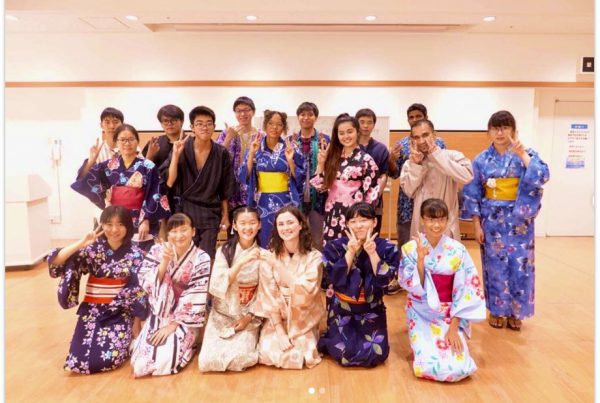Have you ever thought of studying abroad, or do you know of someone who is planning to study abroad?
Studying abroad is a great way for students to broaden their horizon and gain new experiences. Many students are drawn by beautiful pictures of their friends and families studying abroad, experiencing a new culture, and making friends from different countries.
According to an article on the Japan Times, the number of foreign students in Japan stood at 312,214 as of the 1st May 2019. There are various reasons why students choose to come to Japan, but some of the biggest drawing factors include the Japanese culture, the beautiful landscape, as well as safety level in the country.
Being in a country with a different culture or different language from what one is used to is fun, but could also be very daunting for some others. The Japanese language is probably one of the most difficult language to learn, making it harder for foreign students to have a good grasp of the language. How do foreign students in Japan navigate their way through education and life, and what should they do if they encounter challenges?
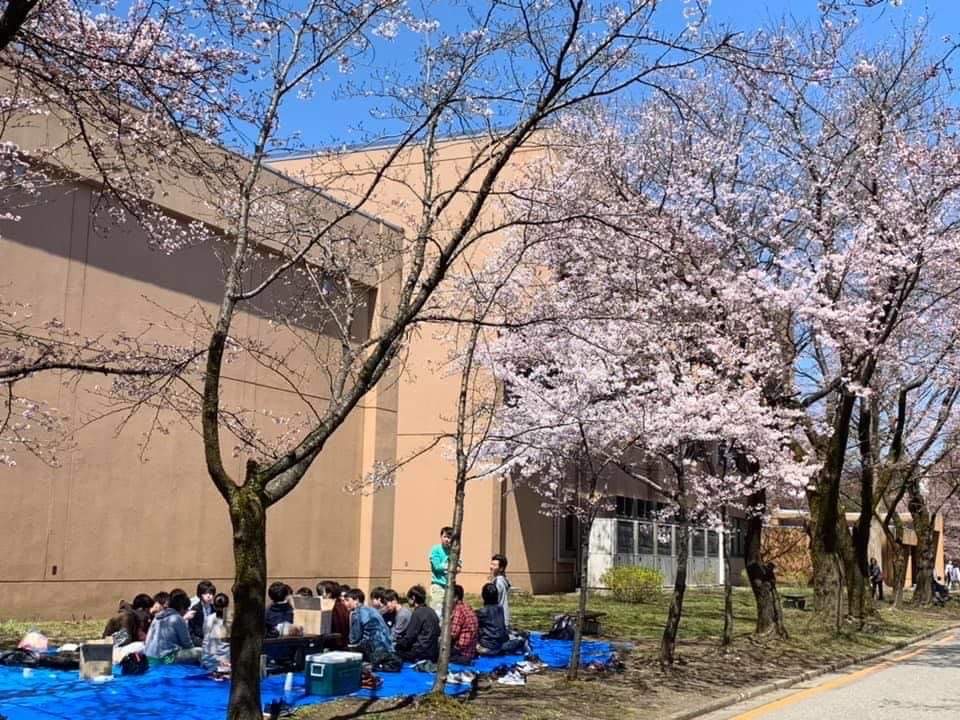
Image of students enjoying Hanami (花見) during the cherry blossom season at the university. Image via Cristian Vlad (2019)
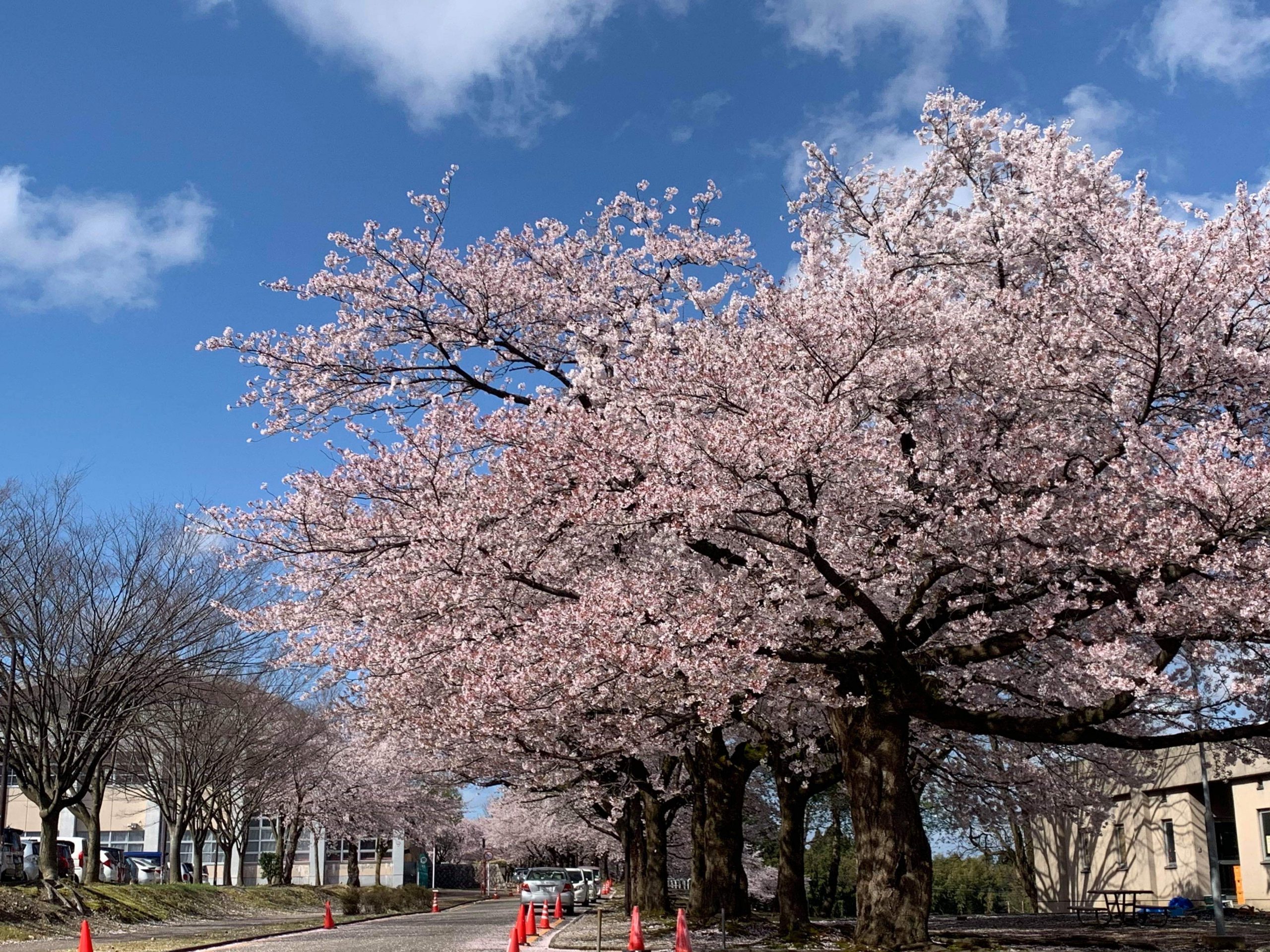
Image of cherry blossom trees lining the side of the road at the Nagaoka University of Technology. Image via Cristian Vlad (2019)
The Nagaoka Review team aims to get to know some of the committed and passionate people who are silently working behind the scenes to make the experience of the international students at the Nagaoka University of Technology a smooth and enjoyable one.
The team recently had an opportunity to speak with the Chief of the Section of International Student Affairs, with the assistance from the International Education Program Coordinator on the role of the Division of International Affairs (Kokusai-ka, 国際課) in bridging the gap and making the students’ experience a great one at the Nagaoka University of Technology.
NR: The Nagaoka Review
CS: Chief of the Section of International Student Affairs
About Kokusai-Ka
NR: Thank you very much for your time to share more about the Division of International Affairs in this interview. Could you briefly share with us about the role of the Division in supporting the University?
CS: The Division of International Affairs is separated into three. The Section of International Student Affairs, the Section of International Planning, as well as the Section of International Exchange.
The Section of International Planning is mainly in charge of coordinating activities related to the introduction or dispatching of NUT professors and students to all around the world, as well as external professors and students to NUT.
The International Exchange on the other hand, coordinates with other universities on Twinning Programs with international universities.
As for the International Student Affairs section, our role is to support international students at NUT.

Image of student at the Nagaoka University of Technology. Image via the Guidebook for International Student, Academic Year 2020.
The Role of the Section of International Student Affairs
NR: What is the role played by the Section of International Student Affairs?
CS: When talking about welcoming international students, the first thing one would think about is the support for students’ VISA application. After that, the Section of International Student Affairs will keep in contact with students and support them until their graduation.
We basically take care of their studies at the University, their life in Japan or any other aspects that they need help, our team members are always here to support our students!
Anytime someone needs help, they could always come to our office or send us an email.
New International Student’s First Experience in Japan
NR: Could you tell us more about some challenges faced by the new international students (newcomers) at NUT?
CS: Some of the biggest challenges faced by our newcomers are usually related to starting their lives at Nagaoka. One of the ways we support the student is by appointing a Japanese student as a Tutor to guide the incoming student to work their way out of life’s challenges, especially if they do not have Japanese language proficiency.
Navigating Japan for the first time is usually challenging for the newcomer. For example, the Tutor will help by picking them up from the station and taking them around the city to ensure everything is done. The Tutor will accompany the student to the City Hall to complete the procedures to move into the city, and proceed to open a bank account, secure a mobile phone and more. The Tutor will also take the student to the university to register for the courses, and more.
NR: Are all Tutors Japanese students?
CS: Most of our Tutors are Japanese. But we also welcome our international students who can speak Japanese to become a Tutor as well.
Living in Nagaoka
NR: What are the available accommodation options for students at NUT?
CS: Students mainly live in the dormitory or in places around the University. Priority is also usually given to the incoming students, therefore some of them can live in the dormitory. There is a maximum limit of up to 2 years per student. After that, students will have to look for accommodation outside.
Because of the limited number of rooms available, some incoming students might have to search for accommodation outside of campus. The Tutor will accompany the international student to look for an apartment. We have a list of realtors that we recommend as reference. We have also seen a rise in students searching for their own apartment online as well.
Students will be given a copy of the Guidebook for International Students, and they could always refer to the available information in the book. The book is updated every year.
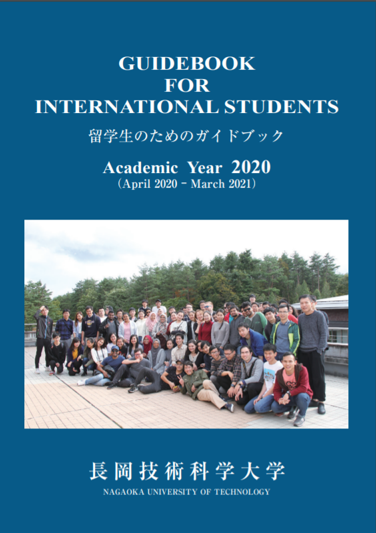
Image of the Guidebook for International Students provided to all students at the Nagaoka University of Technology.
Other Challenges Faced by Students
NR: What are the biggest challenges faced by the international students at the university?
CS: The biggest challenge we see is the financial challenge faced by students. Our division offer help by providing information on the available scholarships from private foundations that the students could apply. Unfortunately, scholarships are limited.
NR: What is the application procedure like?
CS: In general, there are two methods of application.
The first is the type that requires the recommendation from the University. For such applications, the university will have to screen the students according to the criteria set. As for the second type, students can apply on their own without the need for screening to be done by the university.
At Kokusai-Ka, we would inform our students to submit necessary information beforehand if they are interested to apply for scholarships. When new application opportunities for scholarships come for eligible students, we would recommend them accordingly.
NR: Besides securing a scholarship, are there other available options for students?
CS: Students can apply for admission fee and tuition fee exemption. Also, our graduate students have the option of working as a laboratory assistant or take on some available jobs at the university, or even to work with their professor.
*Note: Students can find out more about the scholarships and tuition exemptions from the Guidebook for International Students.*
NR: What are the other challenges faced by students?
CS: There are also some isolated incidences, such as our international students being involved in accidents. Our division is always here to support our students, especially in their most difficult times.
NR: What is the current challenge that your Division is facing?
CS: Since the onset of the pandemic, we have been supporting our students who are not able to enter Japan, mainly due to the lack of available flights. When that happens, we would help students to complete the necessary procedures they need to carry out before arrival in Japan, for example, to apply for extension of the Certificate of Eligibility (CoE) issued by the Japanese Embassy in the student’s country, the completion of the Residence Track Written Pledge, and other necessary documents in advance.
Moreover, when students finally arrive in Japan, our university would provide the student with transportation from the airport to the university and prepare a room for the student to undergo the 14-day quarantine. During this period, we will take care of the health and other daily needs of the student. Our team actively takes precautionary measures to prevent infection and the spread of the virus.
Message to Students (and future students)
NR: What would you like to say to the current and future students of NUT?
CS: From the bottom of our heart, we sincerely thank you for choosing NUT as your preferred university. It is very cold in Nagaoka in Winter compared to Tokyo, and not as convenient. We are happy that you would choose to study here. We hope our students would have a good experience in Japan, have some fun and study well. Moreover, we want our students to be safe during their stay, and for those leaving to return home safely.
Thank you very much to our current students, and we hope to meet our future students soon!
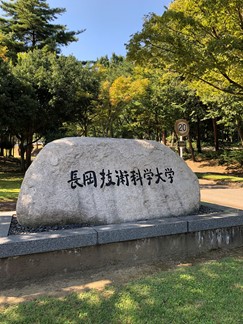
Image of the stone at the entrance of the university. Image via James Chua.
Note: This interview was conducted in early December, ahead of the implementation of the new border enforcement policy that currently excludes new international students from entering Japan starting the 30th December 2020. Please visit the Ministry of Foreign Affair (MOFA) website for more information.







